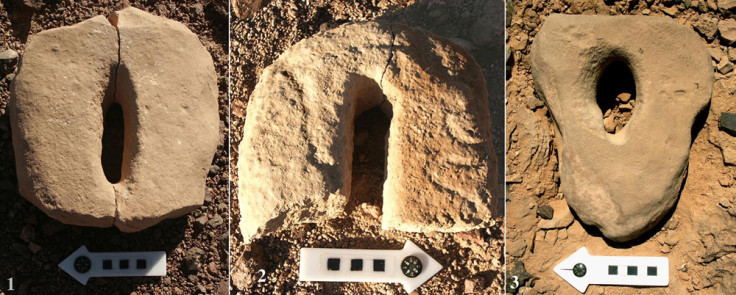100 prehistoric 'cult sites' with penis stone structures and vulva shapes discovered in Israel

Archaeologists are attempting to decipher the meaning behind the phallus-shaped stones and other structures that have vulva-shaped holes cut into them.
"The circle is a female symbol, and the elongated cell is a male one (phallus)," Uzi Avner, a researcher with the Arava-Dead Sea Science Center and the Arava Institute, told Live Science.
Theories include death and fertility rituals were carried out here. Death is "signified by the burial of stone objects and by setting them upside down," according to one of the research team. A human-shaped stone carving was found interred "with only the very top visible on the surface."
"Combinations of both [fertility and death] are actually well-known in anthropological studies as relating to ancestral cult," according to the archaeologists.
The ancient sites are in the arid Eilat Mountains, situated in the Negev Desert in Israel. In one area, archaeologists discovered 44 cult sites. "Taking in[to] consideration the topography, environmental conditions and the small number of known Neolithic habitations in the general southern Negev, the density of cult sites in this region is phenomenal," the research team wrote in the Journal of the Israel Prehistoric Society.

It's believed there are many more sites remaining to be investigated in the area. A "survey of a larger area yielded to date 349 cult sites," Avner told Live Science.
"Many more may be found on the mountains of the Negev, southern Jordan and Sinai."
Archaeologists are working on theories of "a vast phenomenon, of hundreds of mountain cult sites in the desert."
Prehistoric sites are generally known for the representation of the Mother Goddess and other female fertility symbols, with male fertility objects and phallic symbols far more unusual.
"Female representations with highly accentuated sexual attributes are very well documented at many sites, but male representations are very, very rare," said Professor Nicholas Conard, from the department of Early Prehistory and Quaternary Ecology, at Tübingen University.
© Copyright IBTimes 2025. All rights reserved.






















